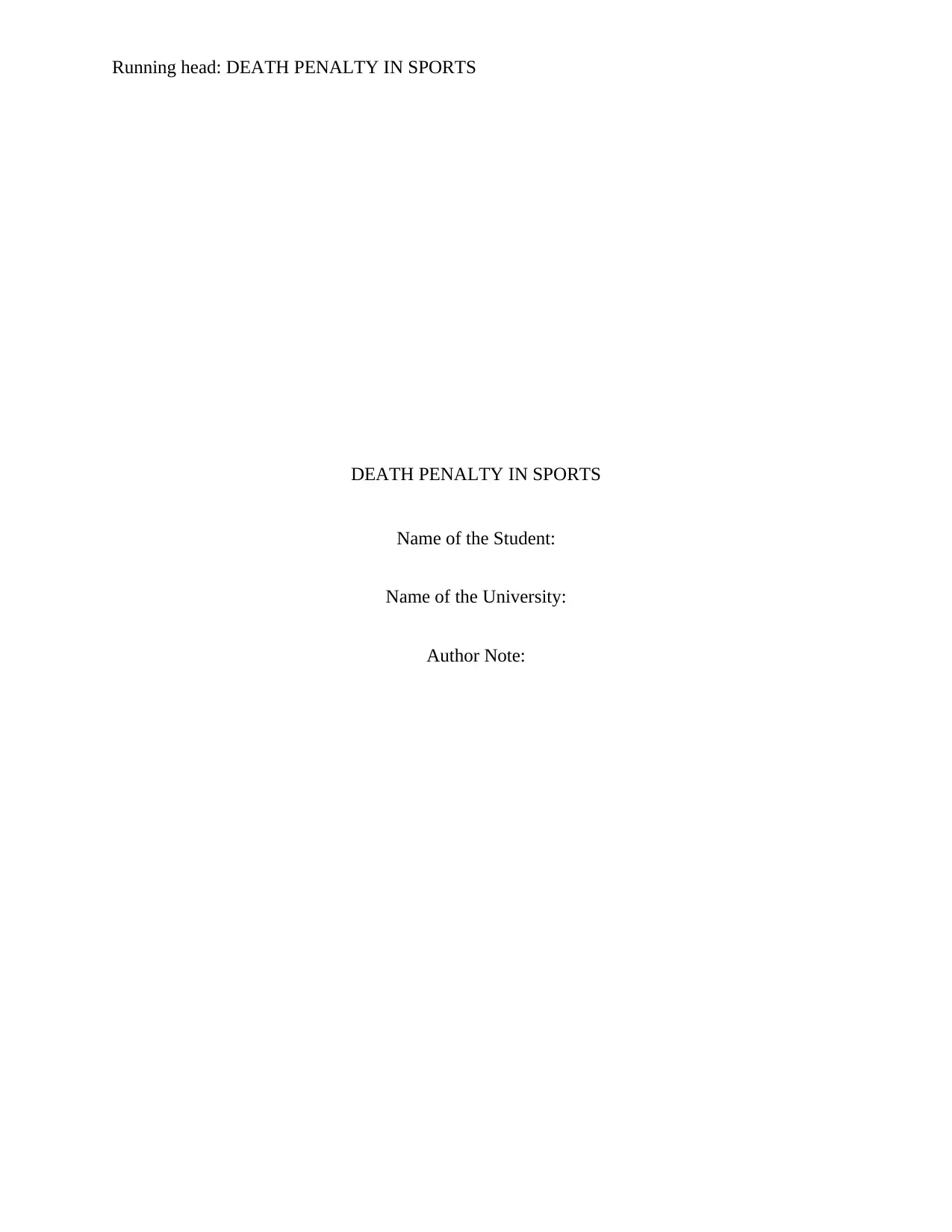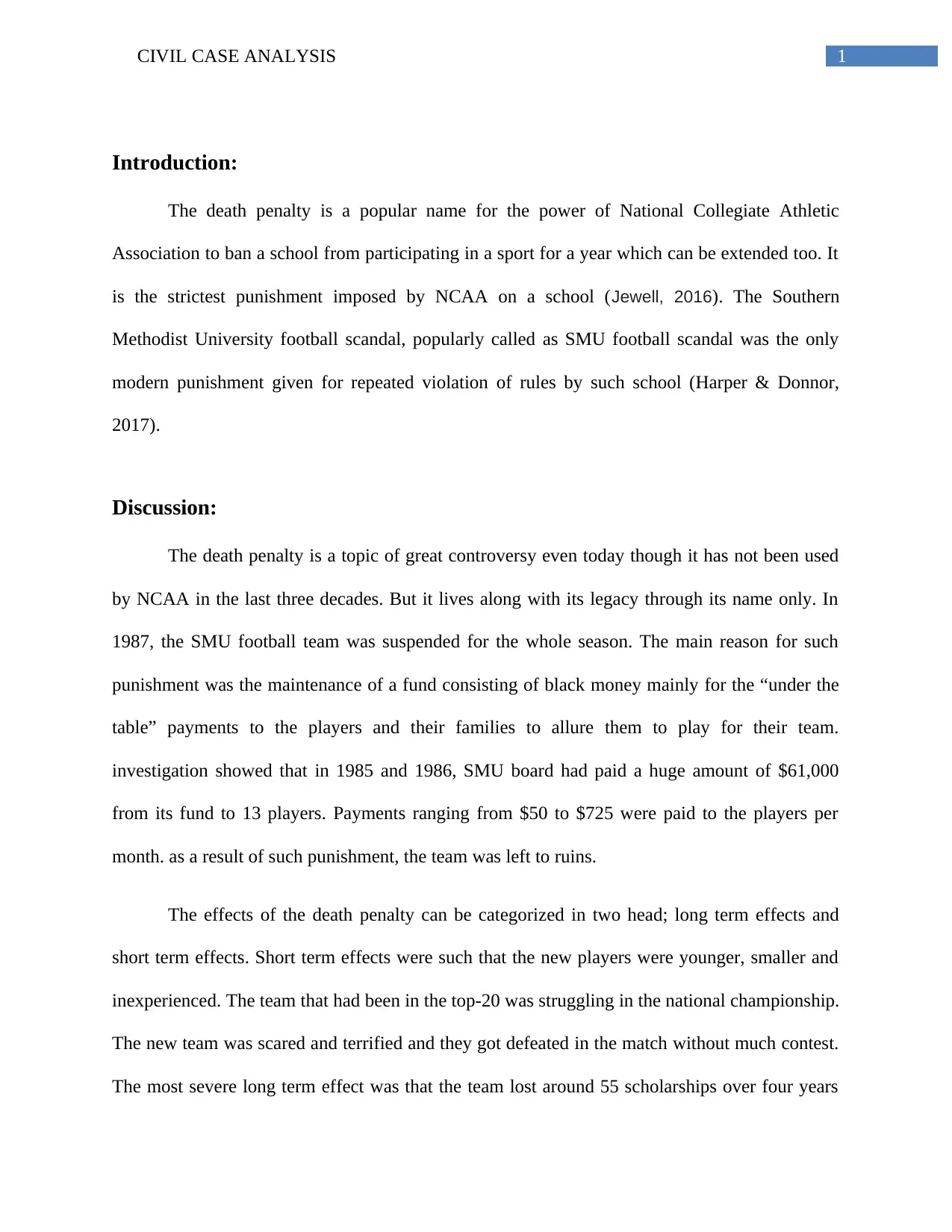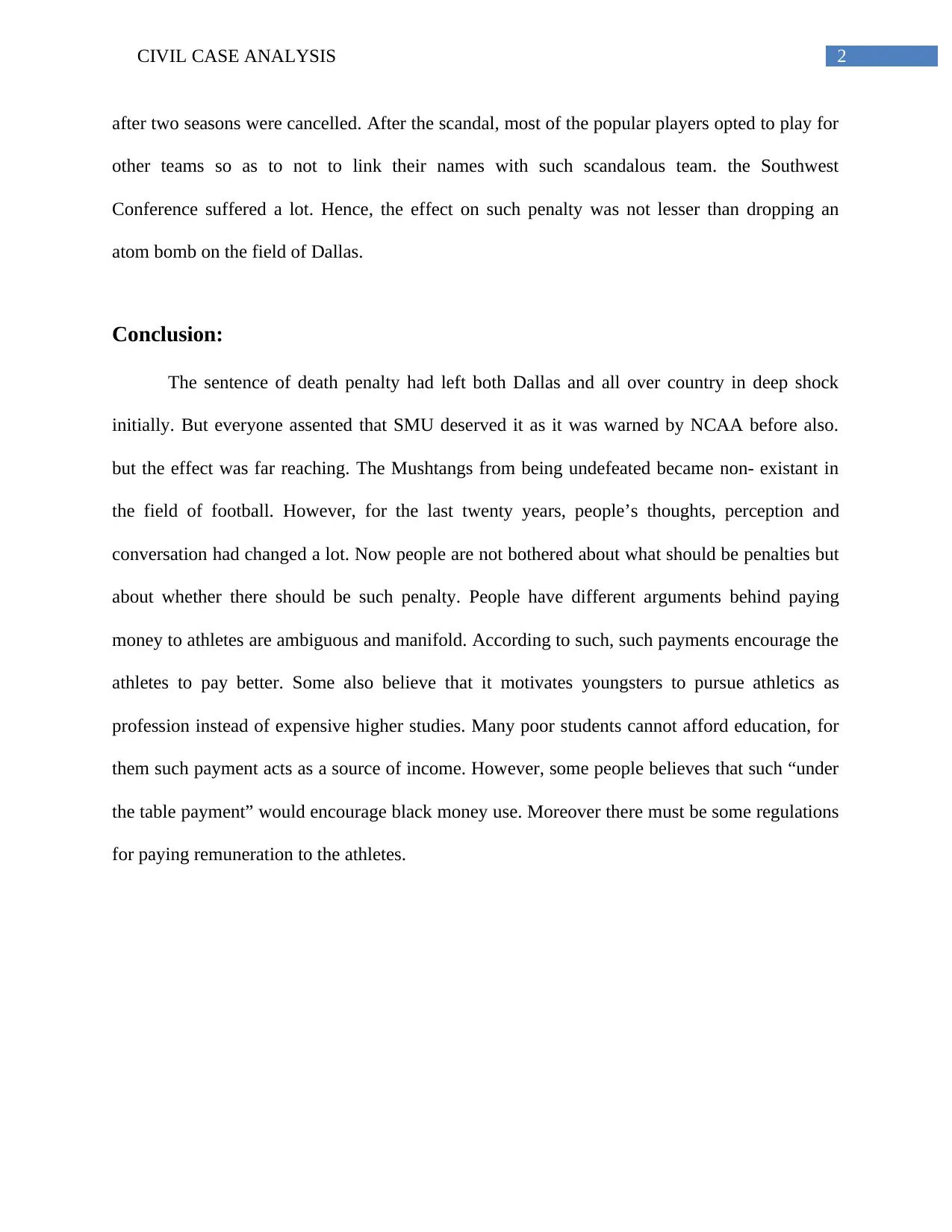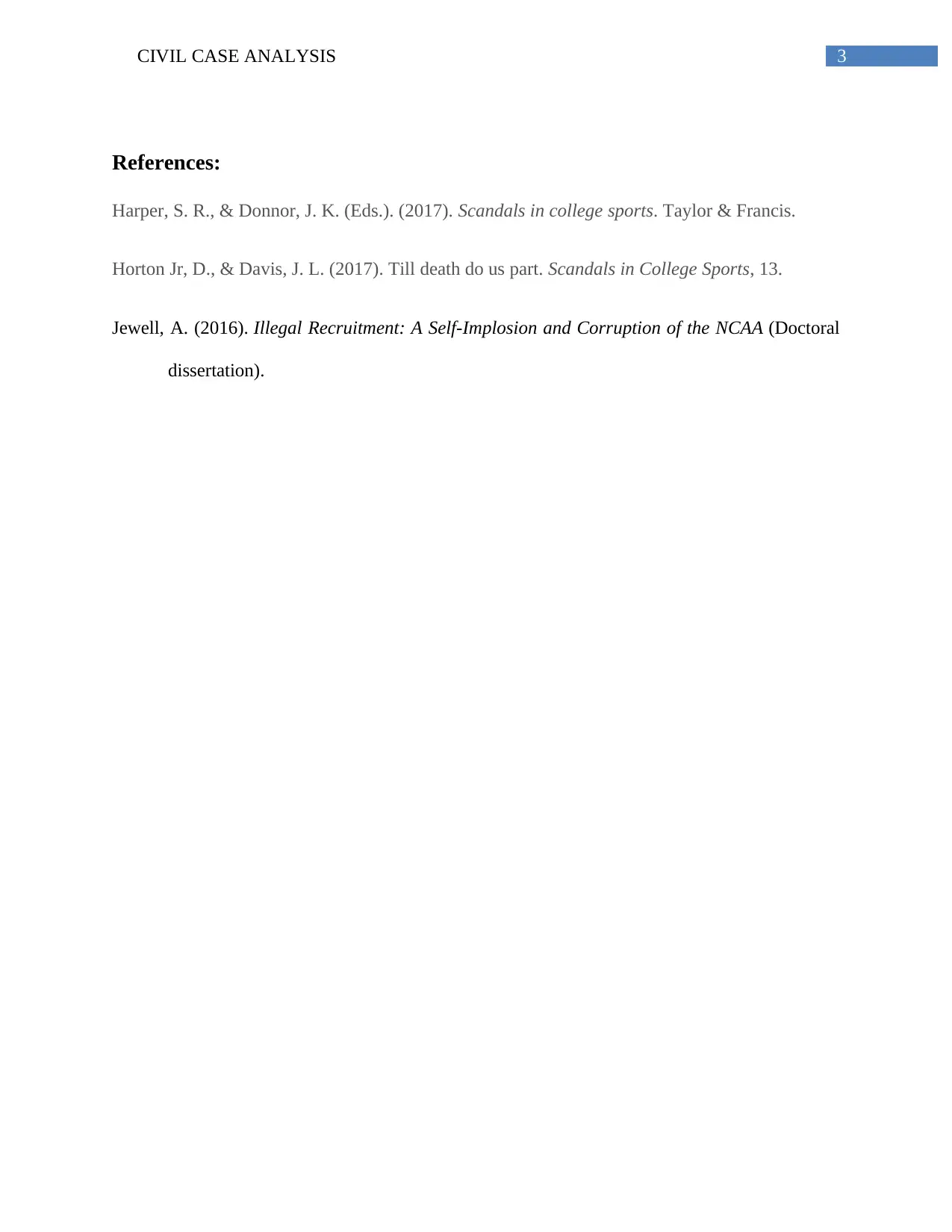Death Penalty in Sports: NCAA Penalties, SMU Scandal, and Analysis
VerifiedAdded on 2023/04/08
|4
|596
|209
Discussion Board Post
AI Summary
This discussion board post examines the controversial "death penalty" in college sports, specifically focusing on the Southern Methodist University (SMU) football scandal. The assignment analyzes the NCAA's strictest punishment, which involves banning a school from a sport for a period, and its application in the SMU case due to repeated rule violations, including illicit payments to players. The post details the short-term and long-term effects of the penalty, such as the decline of the team and the loss of scholarships. Furthermore, it explores the evolving perceptions surrounding athlete compensation and the ethical debates surrounding the "under the table" payments. The author references scholarly sources to support arguments and concludes with a reflection on the changing views regarding the imposition of such penalties. The assignment is a contribution to Desklib, a platform providing AI-powered study tools and access to past papers and solved assignments for students.
1 out of 4






![[object Object]](/_next/static/media/star-bottom.7253800d.svg)